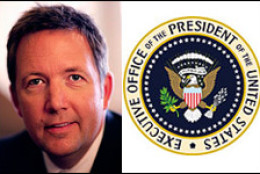Acquisition
-
With the Services Acquisition Reform Act of 2003 (SARA), Congress recognized that agencies were buying more and more services rather than goods.
June 08, 2012 -
In 1998, Congress passed the HUBZone Empowerment Act in order to give a boost to small business located in Historically Underutilized Business Zones in bidding on contracts.
June 08, 2012 -
The Federal Acquisition and Reform Act (FARA) of 1996 built on many of the elements introduced in the Federal Acquisition Streamlining Act of 1994.
June 08, 2012 -
In 1996, Congress passed the Clinger-Cohen Act, which eliminated the exclusive authority of the General Services Administration to acquire technology and allowed individual federal agencies to assume that role. This story is part of Timeline: Congress crafts acquisition policy.
June 08, 2012 -
Ten years after the Competition in Contracting Act (CICA) became law, it was once again time to alter the federal acquisition process in a significant way.
June 08, 2012 -
Congress is always active in the acquisition and procurement area. Every year, it enacts some provisions that are intended to improve the acquisition process.
June 08, 2012 -
Agency introduces the new Demand Based Model that will focus resources on the products and services agencies need and want the most. GSA plans on closing two schedules and parts of 14 others to new offerors. GSA also will cut vendors who do little or no business on the schedule to help reduce administrative costs.
June 08, 2012 -
OMB highlights successes of 25-point strategy on its 18-month anniversary. Federal CIO Steve VanRoekel said agencies saved $100 million from moving email to the cloud. There now are more than 1,000 qualified program managers in the new job series. The IT reform plan helps institute culture change from CIOs on down. June 7, 2012(Encore presentation July 5, 2012)
June 08, 2012 -
NARFE president Joseph Beaudoin and Federal Times reporters Stephen Losey and Sean Reilly join host Mike Causey to talk about a wide variety of issues affecting federal workers. June 6, 2012
June 06, 2012 -
This week on Bloomberg Government's Capital Impact show, results from a new BGov analysis that shows federal contract spending is slumping. Plus, how defense contractors may be able to protect some revenue from sequestration.
June 06, 2012 -
In a first-ever interview, key officials from the Departments of Defense and State responsible for planning the transition to a diplomatic-led mission in Iraq discuss how the two agencies coordinated one of the largest overseas logistical operations since World War II. The article is the first part in Federal News Radio's special report, Trial by Fire: Overseas Contracting in Transition, part of the series, Inside the World's Biggest Buyer.
June 06, 2012 -
Ever since 2003, contractors have played a major role in the contingency operations in Iraq. But with the transition to a State Department-led diplomatic mission there, some analysts believe contractors will play an even more central role. As part of the special series, Trial by Fire: Overseas Contracting in Transition, Federal News Radio examines how industry fared in the DoD-to-State handoff and whether State's enhanced role spells new opportunities for contractors.
June 06, 2012 -
Federal News Radio put together a list of pending legislation that affects federal contractors and the acquisition workforce. We will continuously update this list
June 06, 2012 -
The Office of Management and Budget estimates that $83.5 billion in previous years' Department of Defense funds will remain unobligated on Sept. 30, the end of fiscal 2012, reports Kevin Brancato and Robert Levinson of Bloomberg Government.
June 06, 2012 -
The program launches initial operating capability today. GSA expects the first set of provisionally approved cloud service providers to be ready in December. In the meantime, agencies are holding vendors accountable for coming very close to FedRAMP standards.
June 06, 2012


